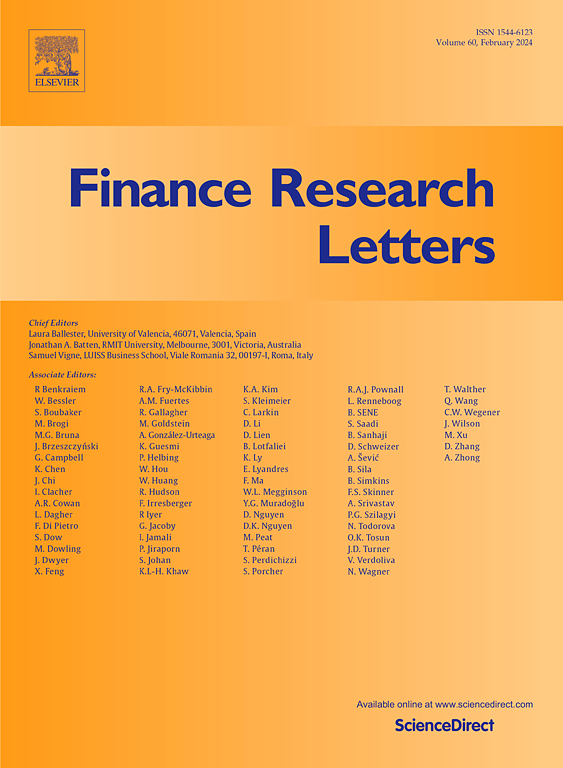城市可持续发展政策与企业碳排放
IF 6.9
2区 经济学
Q1 BUSINESS, FINANCE
引用次数: 0
摘要
推动企业减少碳排放至关重要,但大多数现有研究侧重于城市可持续性举措的区域尺度碳减排效果。本文利用2010 - 2020年中国a股上市公司的数据,研究了《国家资源型城市可持续发展规划(2013-2020)》(SDP)对企业碳排放的影响。采用差异中的差异(DID)方法,我们发现实施SDP的城市显著减少了企业碳排放。异质性分析表明,环境保护重点城市、高碳行业以及处于经济周期成长期和成熟期的企业的减排效果更为显著。机制分析进一步表明,该政策主要通过加强政府层面的环境监管和提高企业层面的绿色创新质量来发挥作用。本文章由计算机程序翻译,如有差异,请以英文原文为准。
Urban sustainable development policy and corporate carbon emissions
Driving corporate carbon reduction is essential, yet most existing studies focus on regional-scale carbon mitigation effects of urban sustainability initiatives. This study investigates the impact of the Sustainable Development Planning for National Resource-based Cities (2013–2020) (SDP) on corporate carbon emissions, using data from A-share listed companies in China between 2010 and 2020. Employing the difference-in-differences (DID) method, we find that the SDP significantly reduces corporate carbon emissions in cities where it was implemented. Heterogeneity analysis reveals that the emission-reducing effect is more pronounced in Key Environmental Protection Cities, high-carbon industries, and among firms in the growth and maturity stages of the business cycle. Mechanism analysis further shows that the policy works mainly by strengthening environmental regulation at the government level and by improving green innovation quality at the firm level.
求助全文
通过发布文献求助,成功后即可免费获取论文全文。
去求助
来源期刊

Finance Research Letters
BUSINESS, FINANCE-
CiteScore
11.10
自引率
14.40%
发文量
863
期刊介绍:
Finance Research Letters welcomes submissions across all areas of finance, aiming for rapid publication of significant new findings. The journal particularly encourages papers that provide insight into the replicability of established results, examine the cross-national applicability of previous findings, challenge existing methodologies, or demonstrate methodological contingencies.
Papers are invited in the following areas:
Actuarial studies
Alternative investments
Asset Pricing
Bankruptcy and liquidation
Banks and other Depository Institutions
Behavioral and experimental finance
Bibliometric and Scientometric studies of finance
Capital budgeting and corporate investment
Capital markets and accounting
Capital structure and payout policy
Commodities
Contagion, crises and interdependence
Corporate governance
Credit and fixed income markets and instruments
Derivatives
Emerging markets
Energy Finance and Energy Markets
Financial Econometrics
Financial History
Financial intermediation and money markets
Financial markets and marketplaces
Financial Mathematics and Econophysics
Financial Regulation and Law
Forecasting
Frontier market studies
International Finance
Market efficiency, event studies
Mergers, acquisitions and the market for corporate control
Micro Finance Institutions
Microstructure
Non-bank Financial Institutions
Personal Finance
Portfolio choice and investing
Real estate finance and investing
Risk
SME, Family and Entrepreneurial Finance
 求助内容:
求助内容: 应助结果提醒方式:
应助结果提醒方式:


